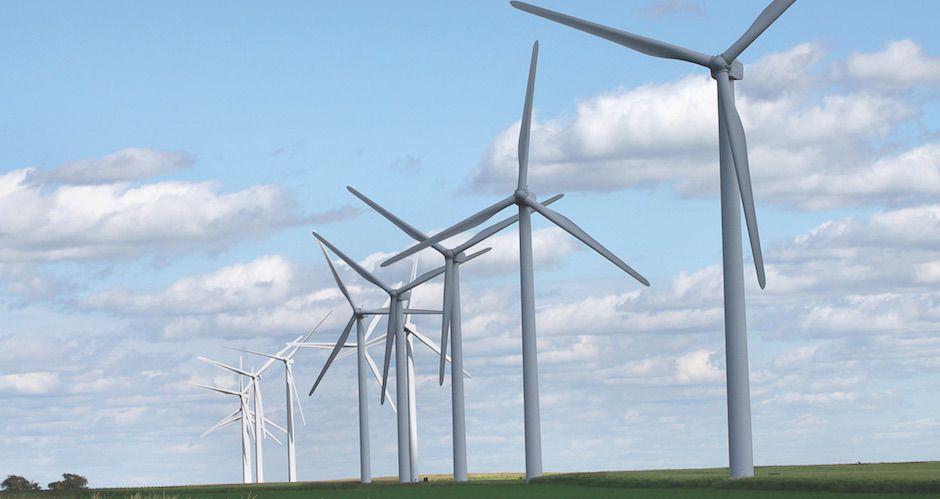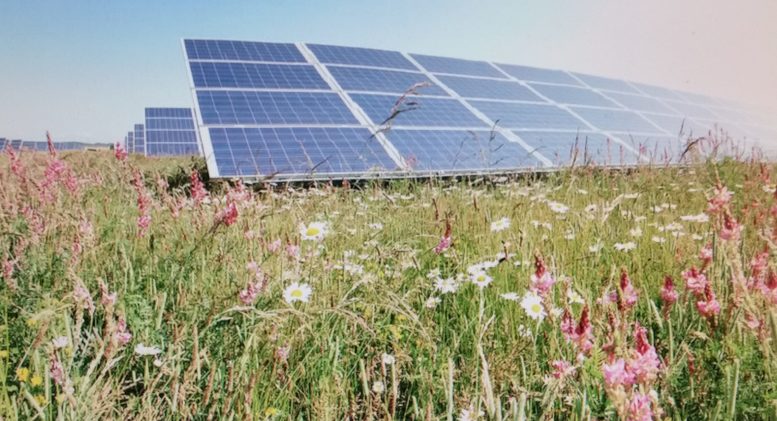By JAN LARSON McLAUGHLIN
BG Independent News
Tony Zartman is familiar with the cautionary tales told by those opposed to wind farms – they would cause cows to stop producing milk and cause children to have autism.
“None of that’s come to fruition,” said Zartman, whose county has 255 wind turbines, the most in any Ohio county.
Zartman has two strong beliefs when it comes to wind and solar energy. First, renewable energy is good for economic development. And second, nobody should be able to tell farmers that they can’t put wind and solar farms on their land.
But Zartman and others with the Land & Liberty Coalition are facing some strong headwinds – both from more traditional utilities and from state government pressured by those utilities.
Zartman spoke to the Wood County Commissioners recently, asking for their help in reaching out to those who might benefit from renewable energy projects, like townships, chambers of commerce, school districts, and county economic development.
“Anyone who would have a stake in renewable energy,” he said.

The Land & Liberty Coalition was formed in 2018 with the goal of giving citizens a voice in their energy future, according to the group’s website. The coalition consists of farmers, landowners and key stakeholders who are concerned about protecting their private property rights, developing their communities and being good stewards of the land.
The coalition puts conservative farmers in the unusual position of pushing for renewable energy rights. In addition to Ohio, there are coalition chapters in Illinois, Indiana, Iowa, Kentucky, Maryland, Michigan, Minnesota, Pennsylvania, Texas, Virginia and Wisconsin.
The coalition was recently awarded a grant from American Clean Power to work proactively for renewable power rights in three Ohio counties – Wood, Wyandot and Ross.
“Landowners want to lease their property. They want that economic development,” Zartman said. “If they want to lease their property, who are we to say otherwise?”
But the siting of renewable energy projects on Ohio farmland is a divisive issue, pitting neighbors against neighbors and farmers against farmers. Some support expanding renewable energy capacity while others oppose losing productive farmland or changing the rural landscape.
A long-standing provision of Ohio law had limited county and township power over energy projects with the “public utility exemption” from zoning. The historical reason for this exemption was to keep local regulations from interfering with public utility services for Ohio residents.
But Senate Bill 52, which became effective in October 2021, gave new powers to county commissioners over certain renewable energy developments, setting aside the “public utility exemption.” The new law states that counties can designate restricted areas where wind and solar development is prohibited and can prevent a proposed wind and solar facility or limit its size.
Wood County Commissioner Craig LaHote assured Zartman that the county has no intention of taking a stance against all solar and wind projects.
“We’d look at it on a case by case basis – not a blanket policy,” LaHote said.
The state bill is specific to wind and solar development, and does not place new restrictions on other types of energy development.
“Wind is virtually dead in this state,” thanks to new state-required setbacks, Zartman said.
“It’s almost like the legislation is taking sides,” Zartman said. “We’re pro-energy – all energy. My goal is to get out there and educate communities.”
Zartman is speaking from experience as a former commissioner in Paulding County, which has 255 wind turbines – the most in any Ohio county. The wind farm has been an economic boon to the school districts there, he said.
But Zartman remembers all the opposition from anti-development groups when the wind turbines were first proposed for Paulding County. The community was warned of the “flicker effect” from the spinning turbines on livestock and children.
That opposition has spread throughout the state, convincing local residents of unfounded risks and persuading the state legislature to make it very difficult for new wind and solar projects to take root.
“They’ve taken a firm hold of the state,” Zartman said. “They want to squash property rights. I believe property rights are a constitutional right.”





